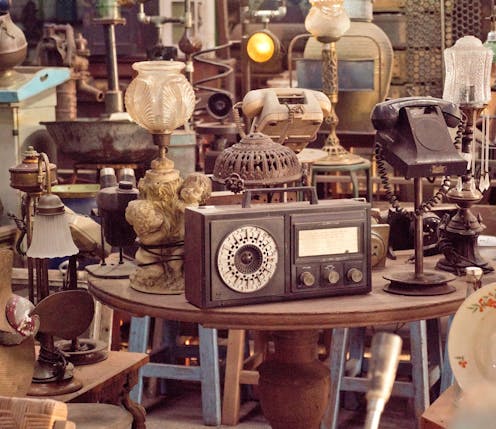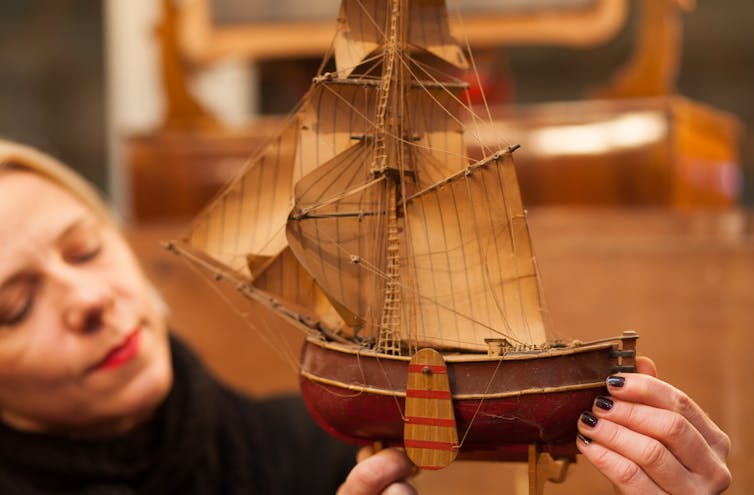
Christmas is a period for celebrating our relationships with family and friends – a time filled with nostalgia and sentimentality. Of course for many people it’s also a time of conspicuous consumption, even if this year in the face of a cost-of-living crisis, spending is expected to fall. But in times of uncertainty and anxiety for the future, feelings of nostalgia often come to the fore as people look back fondly on happier times.
Perhaps then, this Christmas is the time to move away from the tradition of splurging on new, box-fresh presents and give your loved ones the gift of the past.
Research shows that people like to receive sentimental gifts that remind them of cherished times and relationships. People appreciate gifts which remind them of treasured memories and help them to relive meaningful moments. Secondhand shops and markets are filled with objects that have value not because of their price, but because of their connection to people, places and times past.
We interviewed a number of vintage enthusiasts to explore the relationship people have with purchasing old objects. We’ve found that an item’s history, whether real or imagined, is what makes it a meaningful purchase. This is one reason vintage items would make great Christmas gifts.
Old objects have a history, a previous “life” before we come to own them secondhand. This might inspire consumers to think about the lives of previous owners, or imagine the journey the objects have been on. Part of people’s fascination with secondhand items is the associations and stories they develop around them through imagining their past. As one vintage enthusiast told us:
I think that filters down into why we buy secondhand stuff because you envisage all these fancy things, you imagine this certain world, and can attach it to them.
This fantasy can be a source of fun. When buying old things, we might get some details from person selling them, but we rarely get the whole story. This allows us to fantasise about the objects’ history to fill the gap – usually by mixing facts with imagination, creating a romanticised image of the past.
Consumers also develop their own narratives around an item, including the story of how they came to buy it, which they can share with others. A vintage trader we interviewed shared the imagined history of one of his treasured items, an Indo-Persian war shield he kept at home.
It’s had a life. At some point it’s been held by somebody with […] a sword […] possibly in a battle. It’s seen some action […] it may have only ever been ornamental, I don’t know, but, in my imagination, it’s had that life. Then you’ve got to wonder how it’s got from Indo-Persia to the charity shop in Oldham? […]. What’s been its journey?
Storytelling is a part of Christmas too. Just look at the television adverts, which compete for consumer attention by creating emotional or sentimental connections with viewers. Talking about the history of the presents you give and receive could be a great dinner table topic.
Sustainable giving
Buying secondhand is also a way to consume more sustainably. Not only does it give items a second life, it might inspire you to take better care of the things you have.
Curatorial consumption, a concept from the field of consumer research, reflects a responsibility to preserve old items which hold some sort of significance that might be missing in contemporary times, such as craftsmanship. This is often done by acquiring, using or displaying the items, and then selling or giving them to others who can get the same pleasure from them. Many of these items are well-made and durable in contrast to today’s throwaway culture, so can be passed on to others again and again.

Sometimes, the recognition that an item has been cherished by a previous owner, might encourage some consumers to “continue loving it in the same way”, as one participant told us.
They’ve belonged to other people and they’ve been important to other people, and I think that’s really important to acknowledge. Most of the time, they’ve been very well made because things in the past […] weren’t made to be thrown away […] and there’s craftsmanship […] It’s been well made, it’s been well maintained until you got it, that means it’s been loved until the point at which you got it and I think you’ve got a responsibility to continue loving it in the same way.
Our research suggests that this circular way of consumption allows people to not only consume more responsibly, but also to connect with others with similar interests, helping build a sense of community and contribution.
As Black Friday and pre-holiday sales get underway, think instead about gift shopping at a local vintage shop or secondhand website. You may even start a new tradition by buying something old.
The authors do not work for, consult, own shares in or receive funding from any company or organisation that would benefit from this article, and have disclosed no relevant affiliations beyond their academic appointment.
This article was originally published on The Conversation. Read the original article.







